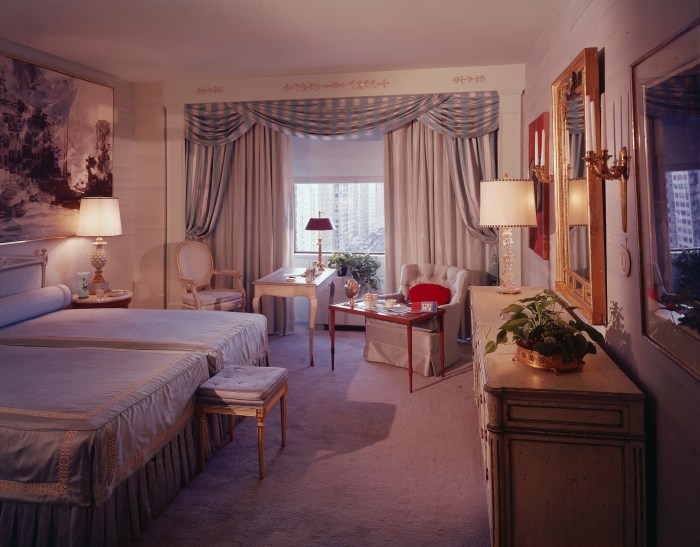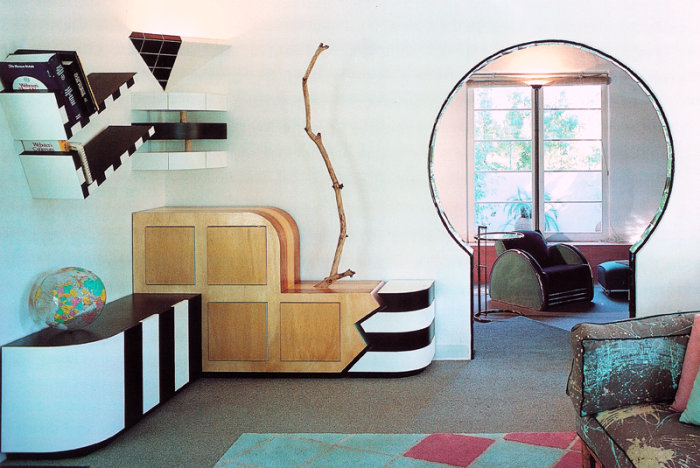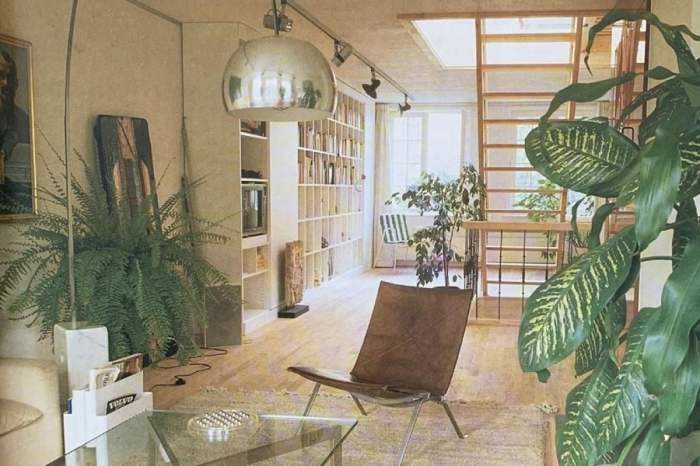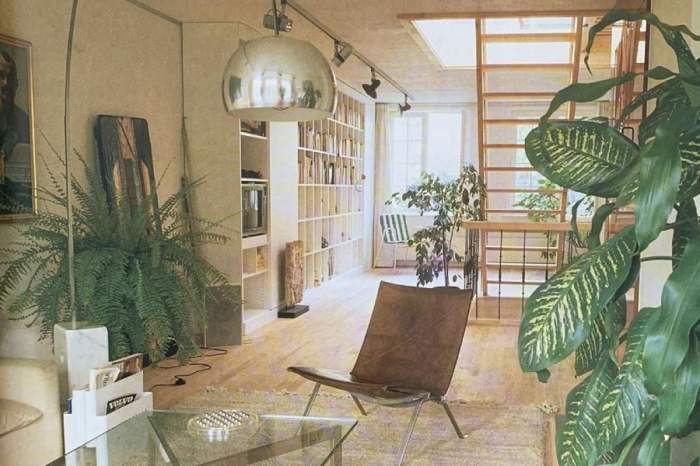1980s house interior design was a vibrant and eclectic period, characterized by bold colors, geometric patterns, and a distinct sense of optimism. This era, fueled by economic prosperity and cultural shifts, saw a surge in creativity and experimentation in home decor, leading to some of the most iconic and recognizable design trends of the 20th century.
From the rise of postmodernism to the influence of pop culture, 1980s interior design reflected the social and cultural landscape of the time. This period saw a departure from the minimalist aesthetic of the 1970s, embracing bold colors, geometric patterns, and a fusion of different styles.
The era was marked by a desire for individuality and expression, and homes became a reflection of personal taste and a celebration of the decade’s vibrant energy.
The Rise of the 1980s Aesthetic

The 1980s was a decade of bold, vibrant, and sometimes over-the-top design trends that reflected the era’s economic prosperity, cultural shifts, and technological advancements. The decade’s interior design aesthetic was a departure from the minimalist and earthy tones of the 1970s, embracing a more flamboyant and opulent style.
The 1980s were a time of bold colors and geometric patterns in home decor. While these elements can be fun to incorporate, it’s important to consider the overall flow and functionality of your space. For a 1500 square foot house, a well-planned layout is essential, and there are many resources available to help you with this, like 1500 square feet house interior design guides.
Whether you’re aiming for a modern update or a nostalgic 80s vibe, a thoughtful design approach can transform your house into a comfortable and stylish home.
Cultural and Social Influences, 1980s house interior design
The 1980s was a time of significant cultural and social changes that shaped the decade’s interior design aesthetic. The rise of the yuppie culture, a new generation of young urban professionals, brought with it a desire for luxury and status symbols.
The popularity of television shows like “Dynasty” and “Dallas” showcased lavish interiors, opulent furnishings, and glamorous lifestyles, influencing the design aspirations of many. The booming economy also played a role, as people had more disposable income to spend on home decor and luxury items.
The 1980s saw a surge in bold color palettes and geometric patterns, often with a focus on creating a sense of luxury and grandeur. This contrasted sharply with the mid-century modern aesthetic of the 1950s, which favored clean lines, functionality, and natural materials.
You can learn more about the 1950 house interior design here , and see how it influenced the evolution of interior design in the following decades. While the 1980s may have leaned towards extravagance, the 1950s design principles of simplicity and functionality continue to resonate in modern interiors.
Iconic 1980s Movies, TV Shows, and Music
Many iconic 1980s movies, TV shows, and music reflected the design trends of the era. For example, the film “Pretty in Pink” (1986) featured a pastel color palette, geometric patterns, and bold accents that were characteristic of the decade’s style.
The popular television series “Miami Vice” (1984-1989) featured a sleek and modern aesthetic with bright colors, geometric shapes, and minimalist furniture, which became a defining style for the decade. The music video for Michael Jackson’s “Thriller” (1982) showcased elaborate sets and costumes, incorporating elements of the 1980s design aesthetic.
The Economic Boom of the 1980s
The economic boom of the 1980s fueled the rise of consumerism and a desire for luxury. People had more disposable income and were willing to spend it on high-quality furniture, designer accessories, and lavish home decor. The availability of new materials and technologies, such as acrylic, laminate, and neon lighting, allowed for the creation of innovative and eye-catching designs.
This era saw the emergence of brands like IKEA, which offered affordable and stylish furniture, making modern design accessible to a wider audience.
Living Room Design

The living room was the heart of the 1980s home, a space for entertaining guests and relaxing with family. It was a reflection of the decade’s bold and vibrant aesthetic, with a focus on comfort and luxurious materials.The layout of a 1980s living room typically emphasized open spaces and a sense of grandeur.
Furniture was often arranged in a conversational grouping, with a focus on creating distinct areas for different activities.
The 1980s saw a surge in bold colors and geometric patterns in house interior design. From vibrant teal and magenta to geometric wallpaper and furniture, the era was all about making a statement. While 1980s design might seem dated today, you can still find inspiration from its boldness and creativity.
For instance, a smaller space like a 120 sq yards house can benefit from the use of bright colors and patterns, as seen in 120 sq yards house interior design , to make the space feel larger and more dynamic.
This approach can help to bring a modern twist to the 1980s aesthetic.
Living Room Features
The 1980s living room was a showcase of bold design choices, with furniture and accessories that reflected the decade’s love of color, pattern, and luxurious materials. Here are some key elements:* Overstuffed sofas and armchairs:These provided a comfortable and inviting space for lounging and socializing.
They were often upholstered in plush fabrics like velvet, chenille, or leather, in rich colors like burgundy, emerald green, or deep blue.* Coffee tables with geometric patterns:These tables were often made of glass, metal, or wood, and featured intricate geometric patterns that added a touch of sophistication and visual interest.* Statement lighting:Chandeliers with crystal or mirrored accents were popular, as were lamps with bold shapes and dramatic bases.
* Wall treatments:Bold patterned wallpaper was a popular choice, especially in geometric, floral, or abstract designs. Textured paint finishes, such as faux-finish techniques like rag rolling or sponging, were also used to create visual interest.* Accessories:Sculptures, plants, and framed art were used to add personality and style to the space.
Sculptures with geometric or abstract forms were popular, while plants were often large and lush, such as ferns, palms, or ficus trees. Framed art could include abstract paintings, prints of famous photographers, or posters of iconic movie scenes.
Last Point

The 1980s left an indelible mark on interior design, with its bold colors, geometric patterns, and eclectic mix of styles still influencing modern decor. While some elements may seem dated, the era’s emphasis on personality, comfort, and a celebration of individuality continue to resonate with homeowners today.
By incorporating elements of 1980s design with a contemporary touch, you can create a unique and stylish space that reflects both your personal style and the spirit of this iconic decade.
FAQ Section: 1980s House Interior Design
What are some of the most iconic 1980s interior design trends?
Some of the most iconic 1980s interior design trends include bold color palettes, geometric patterns, laminate finishes, and furniture with chrome accents. Think neon colors, geometric prints, and furniture with bold shapes.
How can I incorporate 1980s elements into my modern home?
You can incorporate 1980s elements into your modern home by adding a few key pieces, such as a geometric patterned rug, a vintage lamp with a bold shape, or a statement piece of furniture with chrome accents. You can also use bold colors on accent walls or in your textiles.
The key is to keep it balanced and not overdo it.
What are some of the challenges of mixing vintage and modern design styles?
One of the challenges of mixing vintage and modern design styles is creating a cohesive look that doesn’t feel too cluttered or mismatched. It’s important to choose pieces that complement each other and have a common thread, whether it’s color, shape, or texture.




